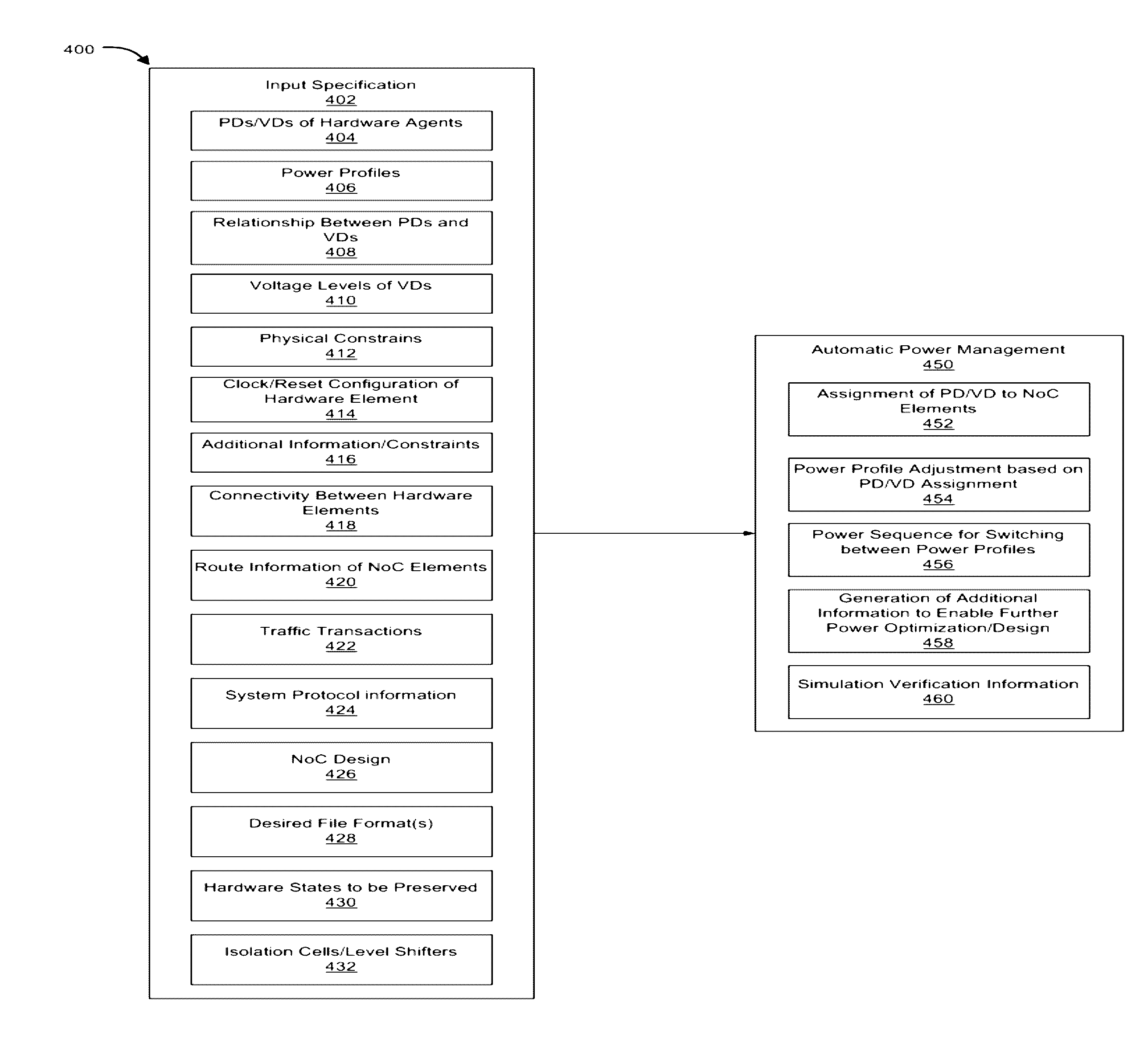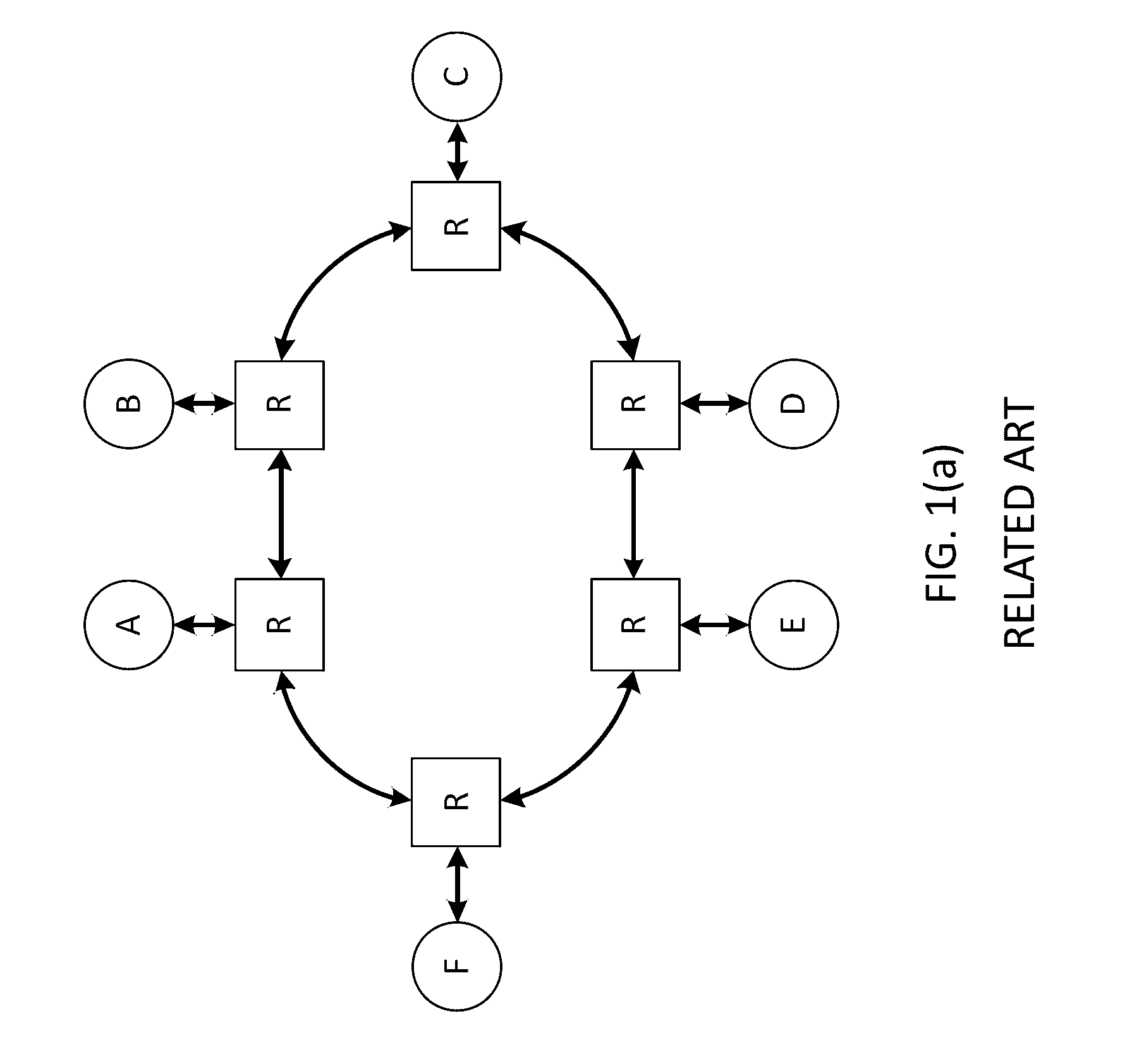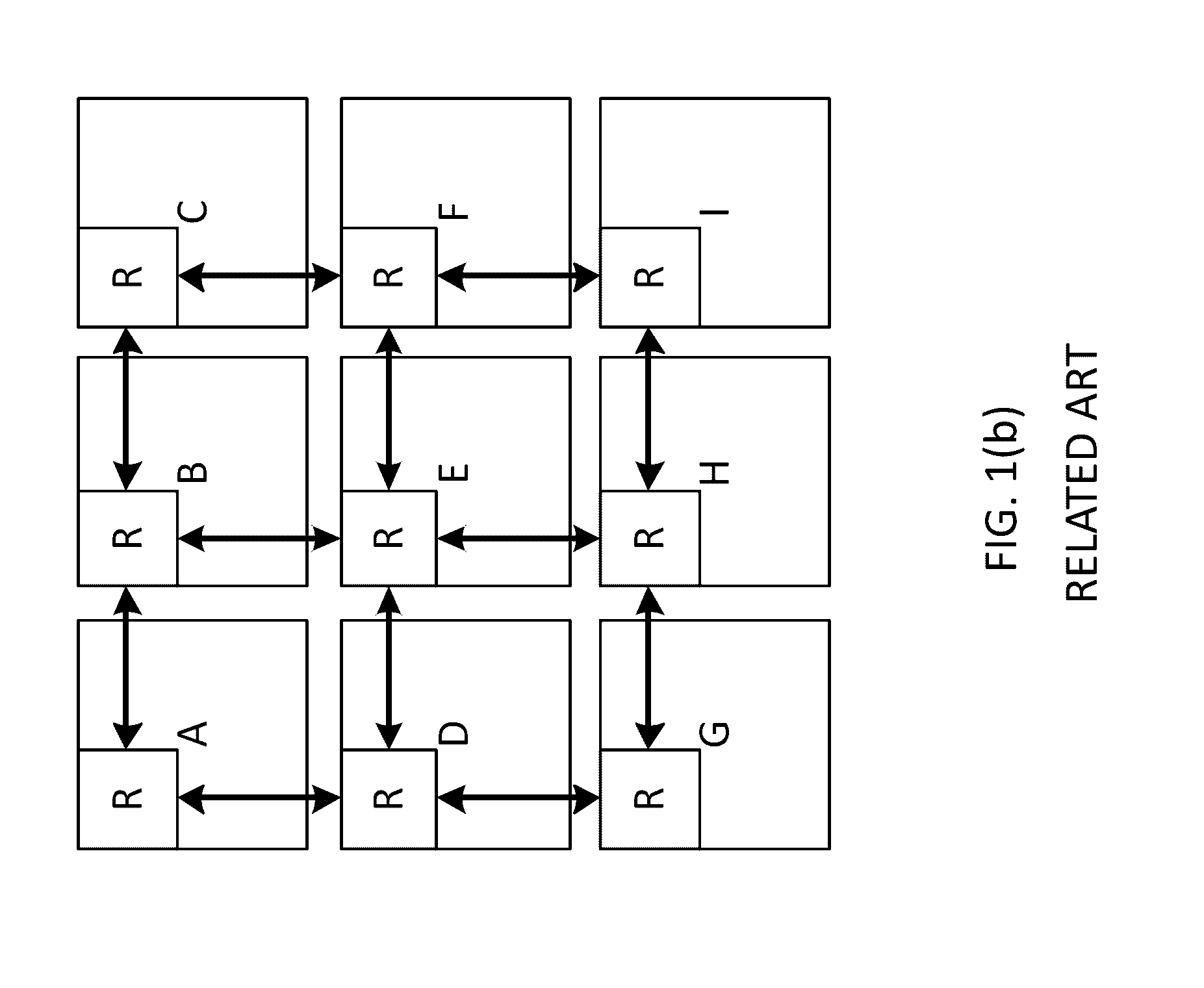Specification for automatic power management of network-on-chip and system-on-chip
a technology of network-on-chip and system-on-chip, applied in the direction of generating/distributing signals, instruments, configuration cad, etc., can solve the problems of complex routing, inability to determine the dimension order, and inability to determine the source and destination nodes. to achieve the effect of avoiding packet data/flit/communication loss
- Summary
- Abstract
- Description
- Claims
- Application Information
AI Technical Summary
Benefits of technology
Problems solved by technology
Method used
Image
Examples
Embodiment Construction
[0038]The following detailed description provides further details of the figures and example implementations of the present application. Reference numerals and descriptions of redundant elements between figures are omitted for clarity. Terms used throughout the description are provided as examples and are not intended to be limiting. For example, use of the term “automatic” may involve fully automatic or semi-automatic implementations involving user or administrator control over certain aspects of the implementation, depending on the desired implementation of one of ordinary skill in the art practicing implementations of the present application.
[0039]As the numbers of on chip components are growing and different heterogeneous subsystems having different frequency and voltage requirements are placed on chip, efficient and low overhead power management has become more difficult. Each heterogeneous resource and subsystem typically has its own power management (PM) protocol, generally d...
PUM
 Login to View More
Login to View More Abstract
Description
Claims
Application Information
 Login to View More
Login to View More - R&D
- Intellectual Property
- Life Sciences
- Materials
- Tech Scout
- Unparalleled Data Quality
- Higher Quality Content
- 60% Fewer Hallucinations
Browse by: Latest US Patents, China's latest patents, Technical Efficacy Thesaurus, Application Domain, Technology Topic, Popular Technical Reports.
© 2025 PatSnap. All rights reserved.Legal|Privacy policy|Modern Slavery Act Transparency Statement|Sitemap|About US| Contact US: help@patsnap.com



